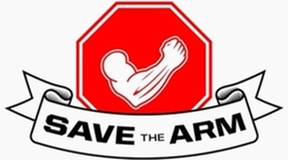Save The Arm(TM) is a whole new and different sort of company. The genesis for the company did not come as a result of careful market planning or analysis. Rather, the company started because of a story….the story of a patient.
Years ago, John Krueger, MD the founder and CEO of Save The Arm(TM) observed several injuries that occurred to patients due to errant needle sticks in lymphadematous arms and in arms which for other reasons (e.g. future dialysis access site, RSD) were not optimal sites for interventions. Despite written warnings in the patients chart and at the bedside instructing staff to not perform invasive maneuvers or attach pressure devices to an arm, the injuries and near injuries continued to occur. Many times patients themselves were the last line of defense and often resorted to having to remain extra vigilant and educate the medical staff themselves to avoid an arm injury.
Dr. Krueger also was aware that few of these sort of injuries were ever recorded or reported and that there was no formal monitoring of near misses. Metrics for protected upper extremity injuries were almost non-existent in the medical literature. Still, the number of times that patients reported dissatisfaction with phlebotomy or needle sticks and the number of avoidable arm injuries seen was sizable.
After a serious injury crippled a patient, Dr. Krueger, knew that something had to be done. He spent several years researching and designing products with patients (e.. a process termed co-production) who suffered from lymphedema and or other protected arm conditions. Together they prototyped several ideas, building upon engineering and safety science methods, and finally came up with a range of products and methodologies that might be used to “Save The Arm”.
The result is this web-site, methodology and product selection. It is the sincere desire that Save The Arm(TM) might become the rallying point that is needed to mobilize health care to take an interest in this very serious injury set and reduce protected upper extremity injuries to zero.



